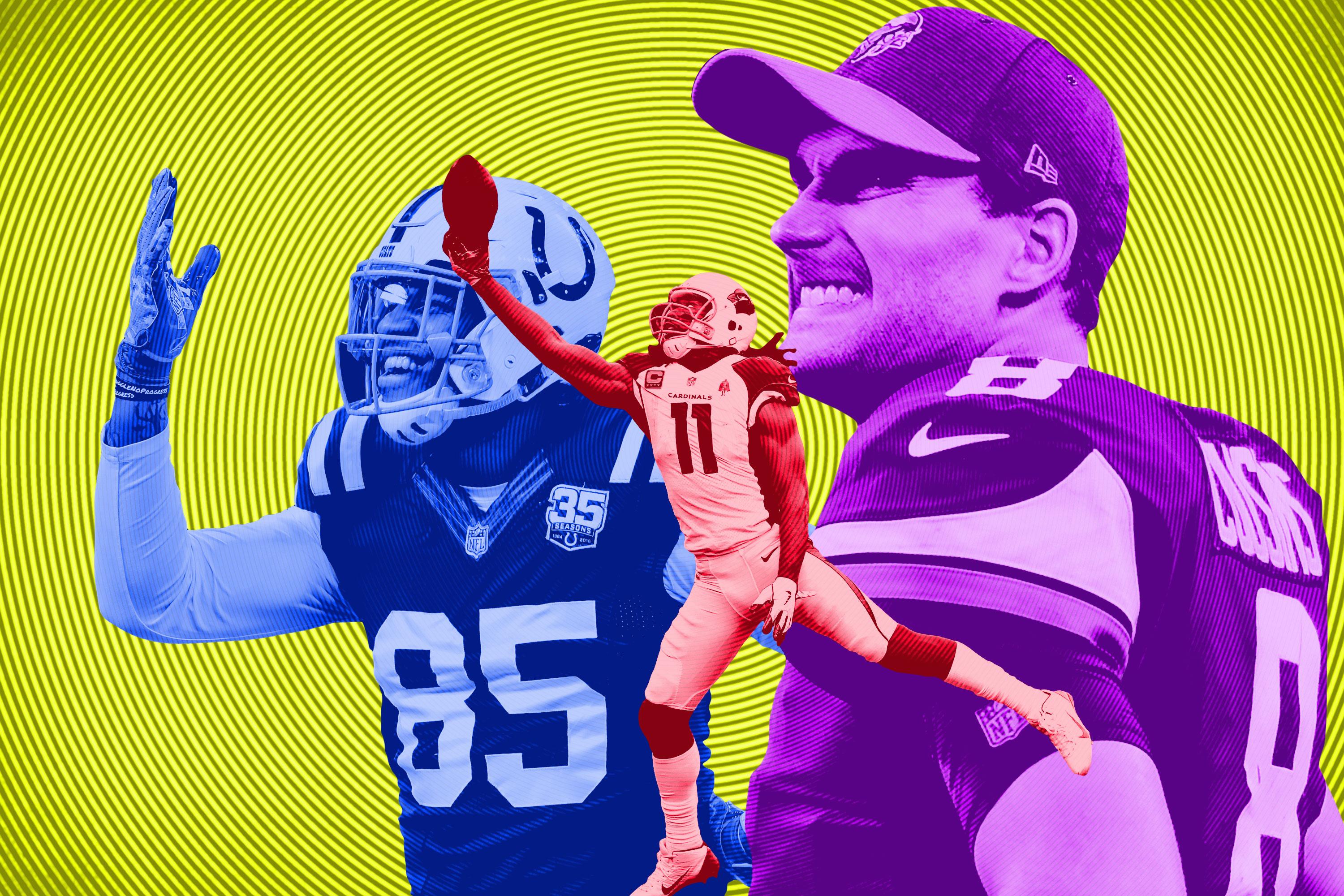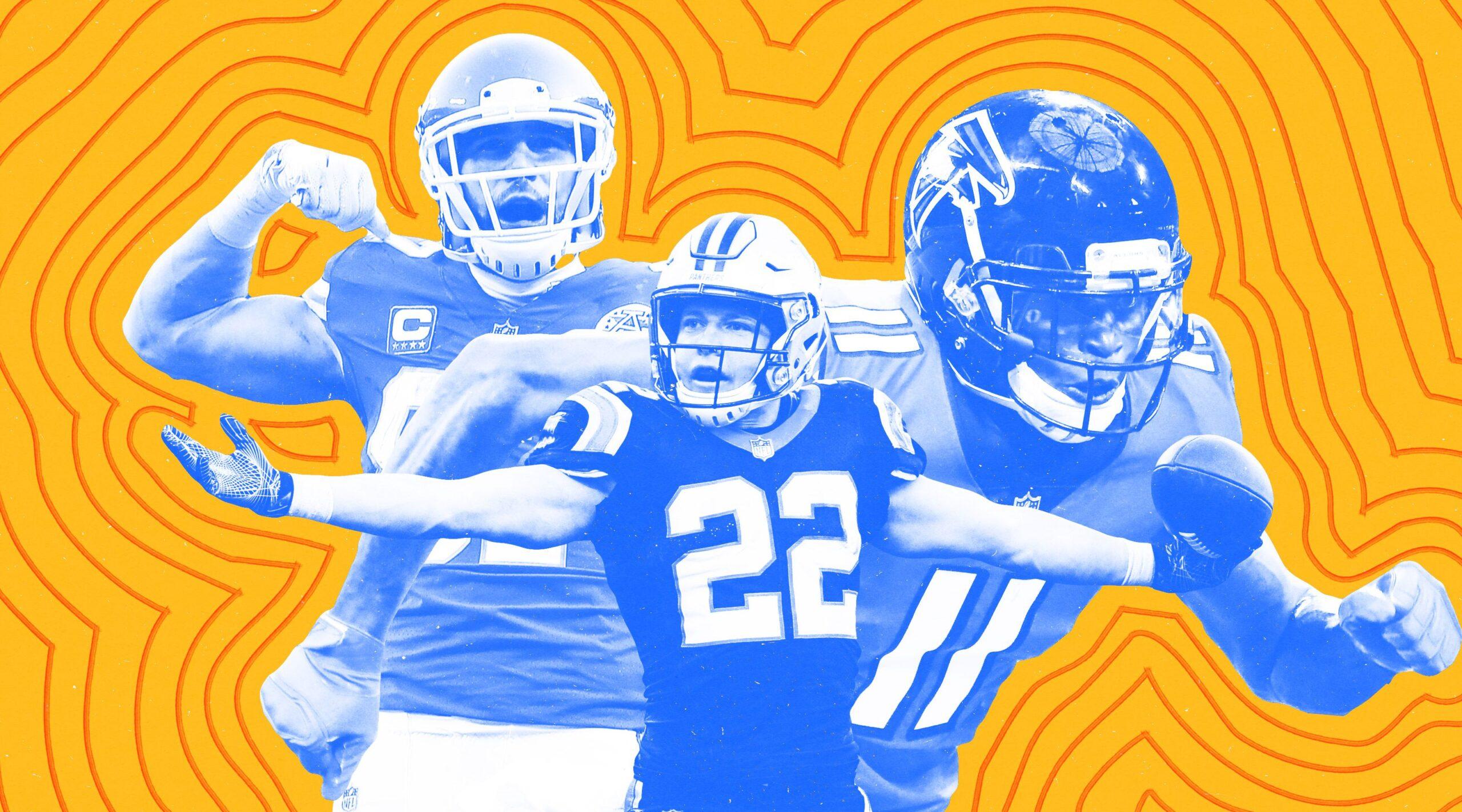
Some random things you learn in high school just stick with you. Maybe it’s the Pythagorean theorem, maybe it’s who the 33rd president is (Harry Truman), maybe it’s that the mitochondria is the powerhouse of the cell. One that stands out in my mind is Newton’s third law: For every action there is an equal and opposite reaction. For every interaction, there’s a cause and an effect. Everything is connected.
This concept often applies to fantasy football. Every time a receiver catches a pass, the quarterback also earns fantasy points. Every time a player gets hurt, a new one steps in to take his place.
The way players are ranked and drafted is also frequently connected. If you think Aaron Rodgers is going to be the best quarterback in fantasy this year, you probably should think highly of Davante Adams as well. If you’re seriously worried about Todd Gurley’s injury status, you might consider drafting his rookie backup, Darrell Henderson. But sometimes those connections get overlooked, and that presents a chance for you to grab value and get a leg up on your leaguemates. As we head into the heart of fantasy football draft season, there are some inconsistencies in the average draft position of some players who are worth taking a close look at. Let’s dive in:
The Vikings’ Passing Game
According to FantasyPros, Adam Thielen and Stefon Diggs are being drafted as the 10th and 14th receivers off the board respectively, both going in the top 35 picks overall. Given that they finished as last year’s WR7 and WR10 respectively, their current positions make sense. But someone has to throw the ball to these guys, right? Then why is Kirk Cousins currently being drafted as the QB20?
I get that Cousins is not a particularly sexy pick. If you drafted him last year you were likely frustrated at his lack of consistency. I sure was. Plus, as we’ve noted here at The Ringer (a great website), once the Vikings changed offensive coordinators last season, they committed much harder to the run game.
So here’s where you can get a leg up on your buddies. Historically speaking, it’s unlikely that Thielen and Diggs will have top-15 seasons if their quarterbacks don’t as well. Over the past five years, there have been 10 instances of a team finishing with two receivers in the top 15 in fantasy points. In such cases, the lowest quarterback finish has been 13th, and most of them have easily made the top 10. Here’s the full history:
2018
- Antonio Brown (WR5) and JuJu Smith-Schuster (WR8) — Ben Roethlisberger (QB3)
- Robert Woods (WR11) and Brandin Cooks (WR13) — Jared Goff (QB7)
- Adam Thielen (WR7) and Stefon Diggs (WR10) — Kirk Cousins (QB13)
2017
- Marvin Jones (WR12) and Golden Tate (WR13) — Matt Stafford (QB7)
2016
- Jordy Nelson (WR2) and Davante Adams (WR9) — Aaron Rodgers (QB1)
- Michael Thomas (WR7) and Brandin Cooks (WR10) — Drew Brees (QB3)
- Michael Crabtree (WR12) and Amari Cooper (WR14) — Derek Carr (QB10)
2015
- Brandon Marshall (WR3) and Eric Decker (WR14) — Ryan Fitzpatrick (QB11)
2014
- Jordy Nelson (WR3) and Randall Cobb (WR8) — Aaron Rodgers (QB1)
- Demaryius Thomas (WR2) and Emmanuel Sanders (WR5) — Peyton Manning (QB4)
Looking at this, either Cousins—who is being drafted nearly three rounds later than Ben Roethlisberger, the current QB13—is a screaming value at QB20, or Thielen and Diggs are being drafted too high.
The Colts’ Tight Ends
Eric Ebron had a career season in 2018, his first year with the Colts. After being the butt of countless “butter hands” jokes during his four years with the Lions, he had career highs in receptions (66), yards (750), and touchdowns (13). He had more touchdowns last season alone than he had in his first four years combined! All of that production led to a TE4 finish. Assuming Andrew Luck is healthy enough for the start of the season—a big assumption at this point—many expect Ebron to continue as a quality fantasy tight end. But you’d be wise to look a little farther down Indy’s depth chart before you draft him.
While Ebron is being drafted as the TE7, his fellow Colts tight end Jack Doyle is being drafted as the TE24. Doyle missed 10 games last year, which allowed Ebron to flourish in a bigger role. But in the six games they played together, Doyle was the clear starter. Doyle received more snaps than Ebron in five of those games and got more targets than him in four of them. In those six games, Ebron totaled only 22 targets, 18 catches, and 228 yards, good for 3.7/3/38 per game. In the 10 games Ebron played without Doyle, he had 88 targets, 48 catches, and 522 yards, good for 8.8/4.8/52.2 per game.
I know—I left touchdowns out of these splits. Ebron actually had more touchdowns in the games with Doyle than without, and totaled 13 on the year—tied for second most in the NFL. But touchdown production can be unstable, and Pro Football Focus notes that he scored an incredible 4.9 more touchdowns than expected given his usage. Of the 15 players with at least eight receiving TDs last year (i.e., the high-volume scorers in the NFL), Ebron was second only to Mike Williams in touchdown percentage, with nearly 20 percent of his receptions going for touchdowns. Before 2018, Ebron’s touchdown percentage was only 6 percent. Everything points to regression for Ebron heading into 2019.
Of course, Ebron had a lot of success last year, so it’s not unreasonable to think he will have a somewhat bigger role in games he plays with Jack Doyle in 2019. But even if he does, with touchdown regression likely coming, isn’t it a little odd he’s being drafted more than 150 picks before Doyle? If Ebron falls lower in your draft, there’s nothing wrong with taking him, but you’ll get more value in Doyle than you will in Ebron.
Kyler Murray and His Receivers
Kliff Kingsbury and Kyler Murray are here to take the NFL by storm. I’ve bought in, Robert Mays has bought in, and it seems like fantasy footballers have bought in, too. Murray is being drafted as the QB12 right now. David Johnson is going as the RB5. This has the makings of a very good fantasy offense. So why are Christian Kirk and Larry Fitzgerald, the top two receivers on the team, being drafted as the WR33 and WR39?
Top-12 quarterbacks almost always support excellent fantasy receivers. In the past three years, 20 of the 36 top-12 quarterbacks have seen their top receiver finish as a WR1, and another 12 have had their top receiver finish as a WR2. Roughly nine out of 10 times, QB1s support at least a WR2.
Sure, there are concerns about drafting an Arizona wideout: Maybe Kyler Murray will get a lot of his points from running. The Cardinals are using a lot of four-receiver sets in training camp, so maybe the ball will be spread around. But history tells us that high-performing QBs typically produce solid wideouts, and Kirk and Fitzgerald are cheap bets. Plus, Kyler can do this:
If Murray is as good right away as fantasy drafters think he will be, you should target either Kirk or Fitzgerald at their discounted price. If you think Murray won’t be as good as drafters seem to think, then it’s the reverse: He’s overvalued, and Arizona’s wideouts are being drafted appropriately. But both of those ADPs can’t be correct.
The Rams’ Passing Game
Last year, the Rams offense was lucrative for fantasy owners. Jared Goff finished as the QB7. Todd Gurley was the RB3 overall and the RB1 in points per game. Wideouts Brandin Cooks, Robert Woods, and Cooper Kupp all finished in the top 20 of receivers in points per game. Now Cooks, Woods, and Kupp are all being drafted as WR2s—but Goff is just QB10. What happened?
It would be one thing if drafters were expecting regression from the passing game as a whole, which would make sense if Kupp, who tore his ACL in 2018, was injured heading into 2019. But Kupp is practicing and the Rams aren’t concerned about his health, so we can proceed as if Kupp will be good to go. This is huge for the Rams offense and specifically Jared Goff. The connection between the two players is obvious on the field, and the numbers bear out how important Kupp is to Goff’s play. Here are the splits from last year for games when Kupp did and didn’t play.
Jared Goff With and Without Cooper Kupp
Goff is undeniably more productive when Kupp plays. Last year he finished as the QB7 overall with Kupp playing only half a season. And yet, Goff is going at QB10 but Kupp is going as WR20. If you believe the Rams offense is still going to be a top-five unit this year—and based on where the team’s trio of wideouts are going, drafters clearly seem to think that—then Goff is a complete steal at his current ADP.
